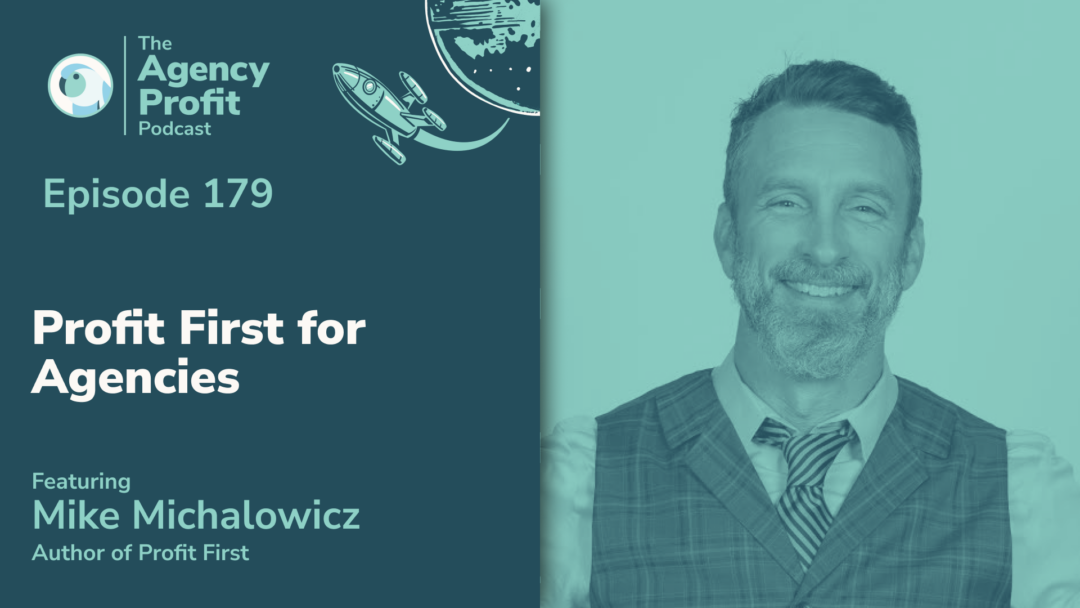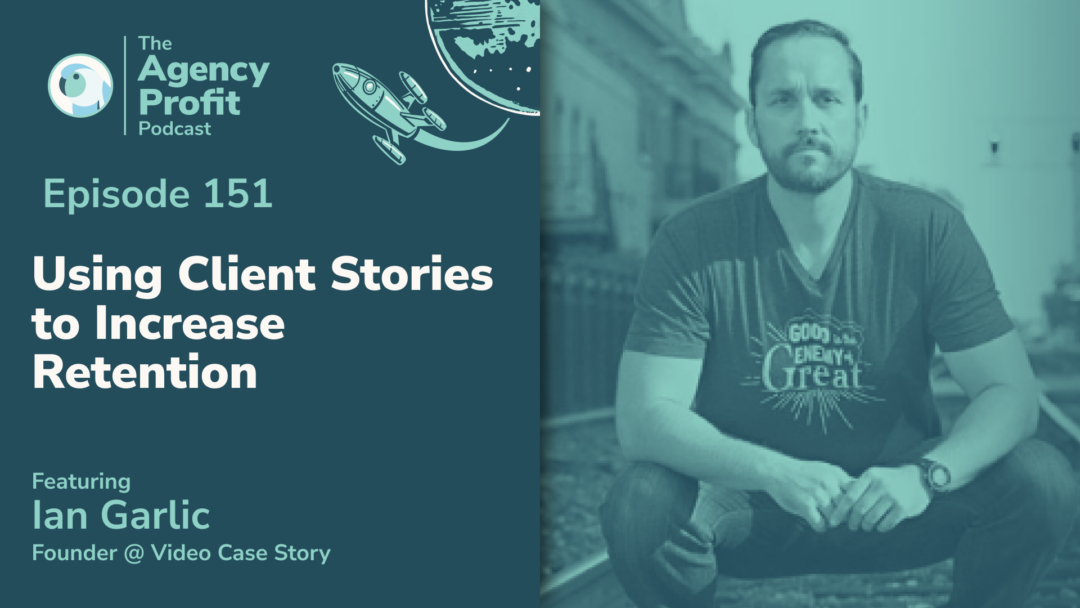It is with extreme pleasure that I welcome you to the product of much painstaking work: The Agency Profit Predictor System Guide.
In this blog post and it’s accompanying resources, I’m going to give you all the tools you need to consistently create more profitable outcomes in your client work, without changing your pricing.
Before we get into any of this though, I just want to warn you that most of this stuff is going to be super BORING. Especially if math doesn’t really excite you.
If I’m being candid, I probably hated writing this as much as you’re going to hate reading it.
For most of us, especially the creative, not-so-organized entrepreneur types, math sucks. It’s not what we like to spend our time on, it’s not why we got into business, and we try to find someone else to do most of it for us.
Spoiler alert: There’s a ton of math in this blog post
BUT here’s why you should stick around and read them anyway:
If you’re not tracking this stuff, you’re losing money.
Plain and simple.
This coming from a guy that doesn’t like to speak in absolutes.
But seriously, any entrepreneur knows it’s almost impossible to manage what you can’t measure. So if you’re not measuring these KPI’s for your client work, chances are you’re leaving a lot of money on the table in your agency.
By the end of this series of technically intensive posts, my goal is to have you understanding what numbers to track, how to track them, and why you’re doing it in the first place.
Why is this important?
Because measuring stuff will give you the visibility you need to not only understand when and why projects go over budget, or off schedule, but to actually see warning signs early on. It will help you make better resource plans and not burn your best people out.
Because at the end of the day, every hour you put into a project above and beyond the budget is a shovel full of profit that’s coming out of your pocket, and going straight into that dumpster fire you and the team have been working all weekend to put out. (We’ve all been there)
Before we start, I just want to quickly remind you why we do what we do at Parakeeto.
Will you make more money by implementing this system in your business? It would be hard not to. But what’s equally (or more) valuable in our opinion, is the changes in the way your business will run.
I’m talking about you and your team being able to work predictable, reasonable hours so you can spend time with your family. Not having to lay off good people due to cash flow issues. Being able to invest back in the business and create more value for everyone you serve, including your clients and your team.
I could go on forever, but if you think about quitting this blog post halfway through, just remember:
This isn’t just for you. This is for your family, your team & your clients too.
So, with all that said, let’s jump into the riveting world of Agency Performance Management and learn how to predict the future. ????
Part 1: Setting Up the Project for Profitability
Of course, we have to start with the foundation of this whole system: the budget at completion.
For some this is a Statement of Work, Project Scope, or a Resource Plan. Whatever you call it, the idea is always the same: we want to create a plan for how much time & money we’re going to invest to deliver an outcome to a client and use that estimate as a guideline for the rest of the project.
Regardless of how you charge for your work, understanding the amount of time and money it should take to deliver work to a client is important. Even if you don’t do fixed pricing and charge by the hour, resource planning is really tough without an estimate of required time to deliver work.
In this post, I’m going to share the overarching formula for calculating BAC and some tips for getting an accurate estimate.
Budget At Completion (BAC)
The Formula:
BAC = Time & Materials + COGS + Contingency Reserve + Management Reserve
The Benchmark:
Under 80% of total project revenue.
Of course, the margin on the project depends on your industry, but it’s hard to imagine any service business that can survive on less than 20% gross margin per project.
The Breakdown:
Scoping work is a subtle art, it’s something that gets easier with time and experience. If you’ve been in business for a while, you can reference past projects to help inform estimates for upcoming work (comparative estimation) if not, you’ll have to make an informed guess in the early days and then measure against those estimates to get a little more accurate next time.
The Estimation Process
There are lots of different estimation styles, but what we’ve found to be most accurate is what is typically referred to as “bottom-up estimation”
The process is simple, you want to list out each deliverable and the order in which they need to be executed. For example in a website build, you may need to have the UX/UI Wireframes done and approved before they move on to the development stage.
Once each deliverable is broken down and ordered, you start breaking the deliverables down into service lines and estimate the time and expenses needed to complete each deliverable.
Example:
For website build, deliverables might be:
- Wireframes
- Website Copy
- Promo Video
- Custom Scheduling tool
Within each of those deliverables, there will be different services required, things like design, copywriting, development, videography, creative direction, strategy, project management, etc.
Once you get each deliverable estimated, you can roll it all up and that’s your BAC for the total project. Plus you can track each deliverable individually.
Of course, this is much easier to do when you’ve got experience with similar projects in the past. But what about when there’s new technology, new clients, a new type of project, new suppliers or even new employees? Let’s talk about tools to factor in uncertainty.
Three useful tools for factoring uncertainty into estimates are:
- Efficiency Rates
- Contingency Reserves
- Management Reserves
The Efficiency Rates are used to factor in the extra time it might take someone with less experience to complete scoped work.
For example, if you’ve got an intern that takes about 40% longer to complete work than the rest of your team, that intern’s efficiency rate would be 1.4
You’d want to multiply any time estimates that intern is assigned to by 1.4 to get an accurate idea of how long it’s actually going to take him/her to complete that work.
Contingency and Management Reserves
These figures are put in place to manage the risk of a project and the added cost associated to that risk.
Contingency reserves are usually calculated as a % of the project costs. These typically range from 5% at the very low end to 25% at the high end. An average is 10-15%
Management reserves are calculated much in the same way. They’re typically 3-15% of the project costs, averaging around 5-7%.
How do you determine what your reserves should be? There is a formula for this, but it would require a whole other blog post and a crash course on risk management.
To keep things simple, here’s a rule of thumb.
High Predictability = Low Reserve
Low Predictability = High Reserve
Basically, if you’re building a website from a template for the 500th time and you’ve got your estimates down to a science, you can go to the low end for your reserves.
If someone is asking you to do highly customized work from scratch that is outside the scope of your usual expertise, it’s better to assume you’ll run into lots of unexpected hiccups, and factor in a higher reserve.
Project Costs
Project costs include any direct or indirect costs that go into a project. The obvious ones are time & material, so direct labor costs, tools and licenses, ad spend, templates, stock photos or any other obvious cost that is incurred when working on the project.
Other less obvious costs that should be factored in are things like indirect labor and overhead expenses. If you’re paying rent for 3 months while you deliver a project, that should be factored in too.
There are lots of ways to calculate this cost, but the way we generally like to think about it is in terms of hourly cost per employee.
For example, if you pay $20,000/mo in rent, internet, software licenses and phone bills and have 10 employees, then your overhead cost per employee per month is $2000
20,0000 / 10 = 2000
If there are 160 working hours this month, then the hourly cost of overhead per employee is $2000/160 = $12.50
The same thing goes for indirect labor. Things like receptionists and admin assistants and any other staff members that don’t contribute directly to client work. Their salary should be broken down to the hour and added in when factoring in project costs.
Again, if there’s a level of uncertainty with costs, that should be considered when deciding on the % of contingency reserve to add on.
Part 2: Tracking the Current Health of a Project.
Once the budget is created, the work begins. That’s when it becomes critically important to measure all the inputs against the plan so you can figure out where you are in terms of project health.
It’s astounding how often I see agencies do a good job of scoping a project and do a great job of tracking time and materials, but never think to put the two together.
This next section is going to walk you through how to get a snapshot of where the project is today, which is the foundation for predicting where it’s going to end up later on by measuring actuals vs the plan.
This part of the system is referred to in Project Management as Earned Value Management (EVM)
Once you get a handle on these metrics, you can identify exactly what’s going right/wrong and take the necessary steps to fix it.
The Three Key Elements of EVM are:
- Planned Value (PV)
- Actual Cost (AC)
- Earned Value (EV)
1. Planned Value (PV)
Planned value is described as the “the authorized value of work that has to be completed in a given time period as per the schedule.”
English Translation: Planned Value is the amount of progress that should have been made and money that should have been spent, if everything was going as planned.
Basically what this means is, if the schedule says the project should be 50% complete, and the budget for the project is $100,000, then the Planned Value is 50K.
The Formula:
PV = Planned % of work complete x Budget at Completion (BAC)
For the sample above this would mean:
Planned % of work complete: = 50%
Budget at completion = $100,000
Therefore
PV = $100,000 x 50%
PV = $50,000
2. Actual Cost (AC)
Actual cost is the cost incurred on work completed to date, so basically; the amount of money you have spent to date.
The Formula:
AC = Time + Expenses to date
The Benchmark:
AC = or < PV
This means when possible, we want our actual costs to be equal or less than our planned costs.
Example:
Direct Labor
James = 20hrs x $35/hr = $700
Kim = 60hrs x $40/hr = $2400
Total = $3100
Overhead
Cost per hour = $9
Hours = 75
OH = 75hrs x $9/hr
Total = $675
Admin
Cost per Hour = $4
Hours= 75
Admin = 75hrs x $4
Total = $300
Other Costs:
Tools/Software = $500
Stock photos = $300
Website Template = $150
Total = $950
AC = $3100 (direct labor) + $675 (Overhead) + $300 (Admin) + $950 (Other expenses)
AC = $5025
Side note: our Agency Profit Toolkit is a one stop shop for you to be able to outline some of these crucial profitability numbers to a potential buyer. Spreadsheets, templates and training videos, you name it, it’s all in the toolkit. Grab yours free at the link below:
3. Earned Value (EV)
Earned value is described as “The value of the actual completed work to date”
This is similar to planned value, but different in that it reflects how much work has actually been completed, where planned value reflects how much work should have been completed.
The Formula:
EV = BAC x % of work complete
The Benchmark:
EV = or > PV
This means when possible, we want Earned Value to be equal or greater than Planned Value. (this means we’re on or ahead of schedule)
Example:
The project is 40% complete, and the BAC is $100,000
EV = $100,000 x 40%
EV = $40,000
Variances
The point of all the above metrics are to calculate variances. Variances paint the picture of how the project is really going and are the foundation for creating Indexes, which will be used to predict the future outcomes for your projects.
The two important variances are:
- Schedule Variance (SV)
- Cost Variance (CV)
Schedule Variance (SV)
Schedule variance shows you if you’re behind or ahead of schedule.
Schedule Variance Formula
Schedule Variance = Earned Value – Planned Value
SV = EV – PV
The Benchmark:
SV = or > 0
What this means:
- Positive Variance = You’re ahead of schedule
- Variance is 0 = You’re on schedule
- Negative Variance = You’re behind schedule
When a project is finished, the Scheduled Variance will automatically become zero (because EV will be 100%)
Cost Variance (CV)
Cost Variance shows you if you’re over or under budget.
The Formula:
Cost Variance = Earned Value – Actual Cost
CV = EV – AC
The Benchmark:
CV = or > 0
What this means:
- Positive Variance = you’re under budget.
- Negative Variance = you’re over budget.
- Variance is 0 = you’re on budget.
How it all works together: An example
Confused yet? Let’s talk about how all this stuff fits together with an example.
Let’s say we have a $100,000 budget for a project. The timeline says we’re supposed to be 50% complete by now, but we’ve only completed 40% of the work, and we’ve spent $55,000 so far.
PV = $100,000 x 50% (Work that should be complete)
PV = $50,000
EV = $100,000 x 40% (Work actually compete)
EV = $40,000
AC = Total Cost
AC = $55,000
SV = $40,000 – $50,000
SV = -$10,000
CV = $40,000 – $55,000
CV = $15,000
As you can see, on this particular project, we’re behind schedule SV = – 10K and we’re way over budget by $15K (CV = 15K)
I know what you might be thinking “ I don’t need all this complicated math to know a project is over/under budget or schedule” and you’re probably right.
But you see, the true magic of these metrics lies in the next section, where we use them to create indexes and use them to predict the future!
Part 3: Predicting the Future with Indexes
Like variances, indexes help you understand the performance of the project. What makes them extra special is they can be used to calculate the projected outcomes of the project too. This means being able to see when a project is heading for the deep end way before it actually happens.
The two key indexes are:
- Scheduled Performance Index (SPI)
- Cost Performance Index (CPI)
Schedule Performance Index
The schedule performance index tells you how efficiently you’re completing work compared to the planned timeline. You use it to determine how early or late a project will be.
The Formula:
Schedule Performance Index = (Earned Value)/(Planned Value)
SPI = EV/PV
The Benchmark:
SPI = or > 1
What This Means:
- SPI > 1, you’re ahead of schedule.
- SPI < 1, you’re behind schedule.
- SPI = 1 all work is completed.
Cost Performance Index
The cost performance index helps you figure out how you’re tracking in terms of cost on the project
The Formula
Cost Performance Index = (Earned Value)/(Actual Cost)
CPI = EV/AC
The Benchmark:
CPI = or > 1
What This Means:
- CPI > 1, you’re under budget.
- CPI < 1, you’re over budget.
- CPI = 1, you’re on budget.
Once we have our SPI and CPI, we can use them to forecast the outcomes of the project using some forecasting tools.
The Forecasting Tools
Once you’ve got your indexes figured out, then you can easily create estimates for where a project is going to end up, how much it will take to finish it, and what you need to do to get back on track (if things are behind schedule or over budget)
The Three Primary Forecasting Tools are:
1) Estimate at Completion
2) Estimate to Complete
3) To Complete Performance Index
Estimate at Completion (EAC)
The estimate at completion metric tells you how much the project is going to cost you based on your current trajectory. Basically, it can help you predict if you’ll be over or under budget at the end of a project and by how much.
There are a few ways to calculate EAC, but for this blog we’ll just focus on the primary method.
The Formula:
Estimate at Completion = (Budget at Completion) / (Cost Performance Index)
EAC = BAC/CPI
The Benchmark:
EAC = or < BAC
Basically, we want our costs to be the same or less than what we had planned for the project.
Example:
BAC = $100,000
CPI = 0.88
Therefore:
EAC = $100,000 / 0.88
EAC = $113,636.36
As you can see, the EAC calculation has helped us get a pretty good estimate on how much this project will go over budget based on past performance. We can see here that at the current rate, this project will go over budget by $13,636.36
Estimate to Complete (ETC)
It is the expected amount of money that you will have to spend to complete the remaining work.
The Formula:
Estimate to Complete = Estimate at Completion – Actual Cost
ETC = EAC – AC
The Benchmark:
ETC = or < Remaining budget
Basically, we want it to cost the same or less than the remaining budget to complete the work.
Example:
EAC= $113,636.36
AC = $55,000
Therefore:
ETC = $113,636.36 – $55,000
ETC = $58,636.36
In this example, we can see that this project is going to cost another $58,636.36 to complete based on the current rate.
To Complete Performance Index (TCPI)
The To Complete Performance Index gives you the future cost performance index that you must follow for the remaining work if you want to complete it within the given budget.
The Formula:
TCPI = (Remaining Work)/(Remaining Funds)
Remaining work is calculated by (BAC– EV).
In the case that we’re over budget, the formula will be:
TCPI = (BAC – EV)/(EAC – AC)
The Benchmark:
TCPI = or > 1
What This Means:
- TCPI > 1, You’re under budget
- TCPI < 1, You’re over budget
- TCPI = 1, You’re right on budget
Example:
TCPI = (100,000 – 50,000) / ($113,636.36 – $55,000)
TCPI = $50,000 / $58,636.36
TCPI = 0.85
In this example, a TCPI of 0.85 means that in order to recover and hit the original budget for this project, overall costs will need to be cut by 15% to (0.15) going forward.
Side Note: Effective Hourly Rate
The effective hourly rate didn’t really fit neatly into this document, so I thought I’d just throw it in here at the end. If you price based on value, charge flat or monthly rates, or even just quote projects based on cost estimates, it’s useful to know the hourly rate you’re actually netting when it’s all said and done.
The effective hourly rate is essentially what you’re charging per hour based on how much time it takes you to complete work.
The formula:
EHR = Project Revenue / ETTC
The Benchmark:
EHR = 2x Labour Cost per Hour or higher
It’ not uncommon for overhead and indirect expenses to be the same or higher than labor costs on a project. As a general rule of thumb, if your EHR isn’t at least 2x what you’re paying your employees, it’s probably going to be hard to scale the business.
Most agencies have a number in their heads that they want to be making for every hour of billable client work. For some, that number varies by service, but calculating this can help you understand how being over or under budget affects that number.
Conclusion + Bonuses
If you’ve made it this far, I hope I’ve convinced you that tracking this stuff is important. That means the next step is doing it in your businesses. That’s where the bonuses come in.
We’ve created a set of tools to help you get started right away, including a spreadsheet template that does all this math for you, and a cheat sheet to help you remember all the benchmarks and formulas we talked about in this post. You can download it below and get cracking right away!
[activecampaign form=5]
Of course, I didn’t write this huge blog just for fun. So I’m going to take a moment to remind you (in case you didn’t know) that Parakeeto automates the process of tracking these metrics. All you need to do is connect your time tracking and accounting tools, and we give you a beautiful dashboard with all this information in it.
So, you know, if you get tired of spreadsheets, HIT US UP.
With all that said, my only hope is that you can implement these systems and benefit from them in your agency. Like I said at the beginning of this long, painful post. I’m not just doing it for you, it’s for all the people who are on this ride for you. So please, do this for them.
If you have any questions about these metrics, the free downloads, or our product, feel free to drop us a line at holla@parakeeto.com and we’ll “holla back” as soon as we can!

Marcel is an agency profitability optimization consultant, keynote speaker and the CEO of Parakeeto. He’s on a mission to help the average agency get the information they need to be more profitable. From sharing educational content and resources to creating tools at Parakeeto to make measuring the most important metrics easier – everything he does is aimed at making agency profitability more accessible.








0 Comments